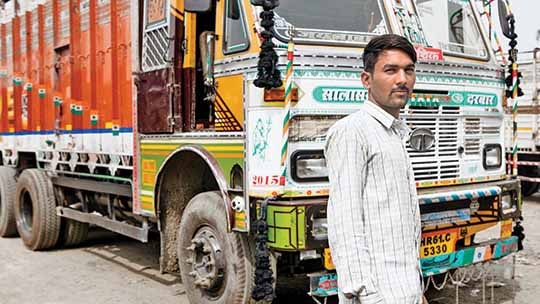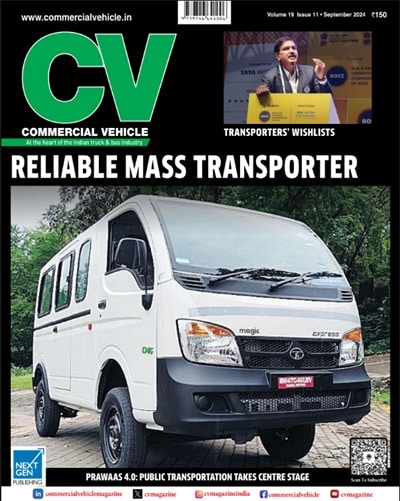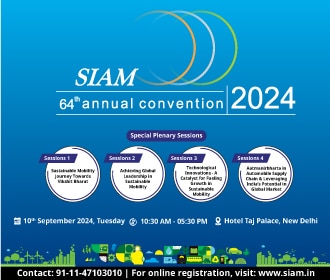As the #BharatiyaNyayaSanhita (second) receives Presidential assent, ushering in a legal era with penalties of up to a decade, it stands poised to supplant the Indian Penal Code (IPC) dating back to 1860. Delve into the insights with Ashish Bhatia as he looks at the emerging perspectives on this pivotal legal transition with drivers at the forefront.
Under Section 304A of the IPC, in the hit-and-run, a driver will be punishable with a maximum punishment of two years or a fine, or both. But if the person has real intention and knowledge to cause the accident, he will be punished under Section 302 of the IPC with death or life imprisonment and a fine. This replacement has raised concerns among various groups, including drivers and the transport community, who have protested against it resulting in traffic snarls, and serpentine queues at fuel pumps and gas stations. In many pockets, unlawful scenarios were reported across the country. As the stir came to a boiling point, on the night of the second day of the protests, Union Home Secretary Ajay Bhalla ended the wait for an amicable resolution. He said, “We discussed with All India Motor Transport Congress representatives. The government want to convey that the new rule has not been implemented yet. Before implementing Bharatiya Nyaya Sanhita 106/2, we will discuss it with All India Motor Transport Congress representatives and then only we will take a decision.”
Justice, by definition, means ensuring justice, peace, and genuine respect for people. The focus on the “purpose of punishment should be to give justice to the victim and establish an example in the society” seems to create an opportunity for bias to creep in. Bias for the offender or bias for the victim until proven guilty. While it is essential to address the shortcomings in handling hit-and-run cases, justice must also be served to the other party in case of an exception where the driver is not at fault. The All India Transporters Welfare Association expressed concern in its tweet. It reads, “If a mob attacks a truck driver due to his truck meeting with an accident with no fault of his, should he worry about Bhartiya Nyaya Sahita or save himself.” The ideal approach would be to prioritise justice for both parties, minimising the rate of erroneous convictions, and avoiding favouritism towards one party over the other.
In strong words, the All India Motor Transport Congress (AIMTC) had in the last week of December warned of the situation potentially getting out of hand. Calling it a “draconian legislation” its tweet read that the Bhartiya Nyaya Sanhita has sent shockwaves among the transport fraternity and warned the demoralised drivers are planning to shun this profession altogether. A driver’s post urging the community to leave their vehicle and return to spend time with their families has gone viral. The driver expresses his inability to pay the proposed fine of up to rupees seven lakh. He is contemplating turning to farming for his livelihood if his plea goes unheard. AIMTC is known to have addressed a letter to the PMO urging a relook at the provision of up to 10-year jail for ‘Hit and Run’ cases where the offending driver doesn’t inform the police or local magistrate. It also flagged the unscientific trend of blaming the large vehicles and the mob targeting the driver of such vehicles in most cases.
The movement to change colonial laws is known to have been initiated in 2019 in the present government’s term. Claimed to have been the formulated on basis of the three basic spirits of our Constitution – freedom of the individual, human rights and the principle of equal treatment to all, Amit Shah, Union Home Minister and Minister of Cooperation, also reiterated that justice has not been imagined in the present three laws and only punishment has been considered as justice. He opined that the purpose of punishment is to give justice to the victim and to set an example in society so that no one else commits such a mistake. He claimed the change was a first attempt at humanising the present laws. A total of 3200 suggestions are known to have been received regarding these laws and the minister himself is said to have held 158 meetings to consider the three new laws. On August 11, 2023, the bill among other new bills was sent to the Standing Committee of the Home Ministry for consideration.
The law additionally prescribes timelines for the police, judges and lawyers. The claimed first change in 150 years is welcome. However, the response it has elicited hints at the need for a greater dialogue with the stakeholders of the industry. A retrospective relook post creating a stir tends to play out in unforeseen ways causing avoidable bottlenecks in the short term. Case in point the unruly protests, property damage, the forced shortage of essentials and resultant inflation among the unwanted outcomes contrary to the intended objective. This approach of taking along stakeholders before introducing “victim-centric” justice seems fair and reasonable to the naked eye. The intent may be good but it all boils down to execution! The central government as expected was forced to postpone the enforcement. It is expected to pay heed to the concerns cited before rolling out the law.
This is a developing story. Watch this space for updates and insights.






























